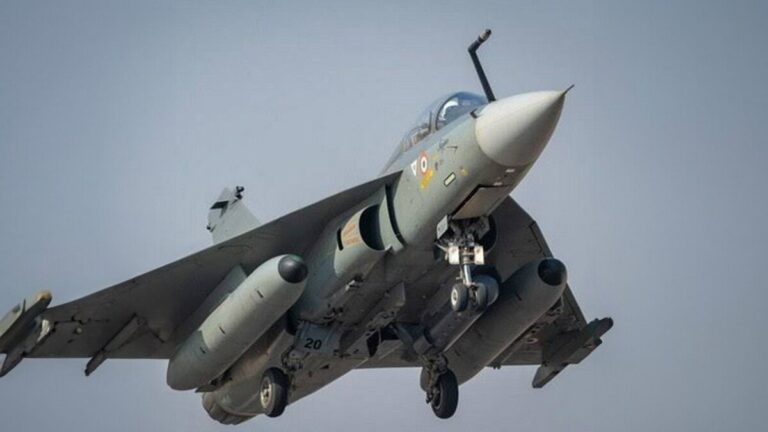Former Indian Air Force (IAF) Group Colonel Ajay Ahlawat has warned that India will not be able to defeat China militarily for the next 30-40 years, as the Indian Air Force’s squadron strength has declined to ‘2015’. He said there was a need to procure fighter jets. Levels are dangerously low. He also emphasized the need for a comprehensive national security strategy that aligns all forces toward consistent security objectives, and emphasized that this framework is essential to effectively navigating growing challenges, particularly with China. He emphasized that he believes that it is essential.
“We need something like a National Security Strategy that forces all militaries to recalibrate their doctrine toward achieving our national security goals. From that doctrine to our equipment, training philosophy, tactical and There are many ways to approach security.” “We can decide not to fight, or we can decide to fight aggressively. Our security strategy is to ask: Who is China? Is it a friend, is it a competitor, or are we fighting them in the crossfire? It will tell you what you need to do,” he said in an interview with ThePrint.
Ahlawat said New Delhi needs to control Beijing through other means such as diplomacy and alliances. “The gap with China is huge and it’s getting wider. What I’m saying is that it’s impossible to defeat China militarily in about the next 30 to 40 years. We have to defeat China by other means. It will have to be managed through diplomacy and alliances.”
“Our dispute with China is not a civilized one. The dispute with China is related to unclear borders, and both countries have different versions of their borders. “If we can, and we have shown the inclination to make concessions…we saw that after the Doklam crisis,” he said.
The retired colonel’s remarks come amid growing concerns about the Indian Air Force’s strength, especially in the backdrop of delays in the Tejas fighter jet program. The IAF is pushing to introduce Tejas to replace the aging Mig-21 fleet, but the process has been slow and the first 40 Tejas ordered in 2009-2010 are yet to be delivered. Not done.
Earlier this month, IAF Air Chief Marshal AP Singh warned of delays in production of the Tejas fighter jet being developed by Hindustan Aeronautics Limited (HAL). Singh said the Air Force is yet to receive the first batch of 40 aircraft ordered in 2009-2010. His remarks came days after China tested a mysterious sixth-generation stealth fighter jet.
Ahlawat, an experienced fighter pilot, said part of the delay in Tejas production was due to external factors such as US sanctions imposed after India’s nuclear test. “We came up with this idea in 1984. The first flight took place in 2001. 16 years of delays…much of it due to US sanctions after nuclear tests. It took 15 years to get a squadron up, but there was a written contract to supply 40 aircraft by 2013. ”
“Currently, the cause of the delay is being blamed on GE engines. Now imagine if we went to war tomorrow or next month, all of these reasons would be for naught. We would deploy right now. If domestic industry can provide them, they should of course be the first choice, but if this is not possible and delays are anticipated, then in the event of a conflict. We need to have equipment at our disposal that can be used for this purpose,” said the former pilot. Added.
An Air Force veteran said the IAF has put all its eggs in the LCA (light combat aircraft) basket. Nearly 200 aircraft are in rotation. 3 squadrons of LCA Mark 1, 4 squadrons of Mark 1A, 4 squadrons of LCA Mark 2, and 6 squadrons of AMCA (Advanced Medium Combat Aircraft). Of this list of 17 squadrons, only three squadrons are visible, he added. “Mark 1 is nowhere to be found. Mark 2 is still cardboard. AMCA’s first flight is promised sometime in 2028, but it will be another decade before it can fly. So the numbers are dangerously low. We are at a low level. At this stage, we have the lowest squadron strength since independence.”
Ahlawat said the Tejas program will take time to amend and the proposal to import a certain number of fighter jets in the meantime is only to ensure that there is no hollowing out of the air force. “Our fighter force is at its lowest level since independence. The deterrent power of our air force is very low at this point.”
Asked if imports are bad, Ahlawat said imports are “necessarily bad.” He said that when the government of the day calls on the military to go to war, it expects the military to win the war, adding, “It doesn’t matter whether we win with domestically produced equipment or imported equipment.” Not,” he said. He further said that it was the imported Bofors guns and the imported Mirage 2000 that helped India change the course of the Kargil war.
In the face of these challenges, Ahlawat believes India needs to continue investing in procurement and development, and adding more Rafale aircraft could be a viable short-term solution. It suggests that there is. “Adding more Rafales makes a lot of sense. We already have the machines, we already have the stores, we already have the trained crew.”
Ahlawat also compared India’s defense modernization to China’s military leap forward. “Around 2000, China decided they were ready to take a big leap forward. They set a goal of 20035 to become as powerful as or more powerful than the U.S. military. Then the realignment began. We are still stuck.” Jal Tal Nav, or Air Force, Army, and Navy, went further and created three more domains: space, cyber, and the electromagnetic spectrum. ”
A former pilot said China has a rocket force capable of disabling enemy airfields. “Rocket Force will probably launch the first salvo and destroy all airfields of concern. They are thinking in terms of cyber capabilities and occupying high ground in space. “And if we capture it, it’s the same as capture.” They’ve also made a lot of progress in the electromagnetic spectrum, there’s no doubt about that. ”


